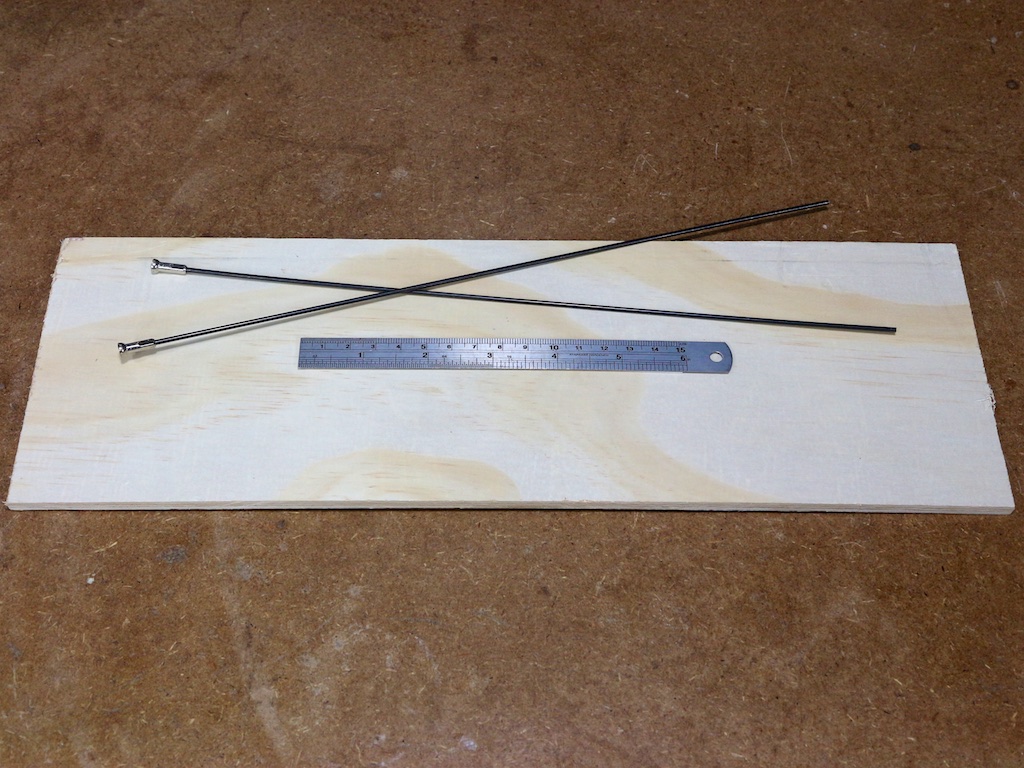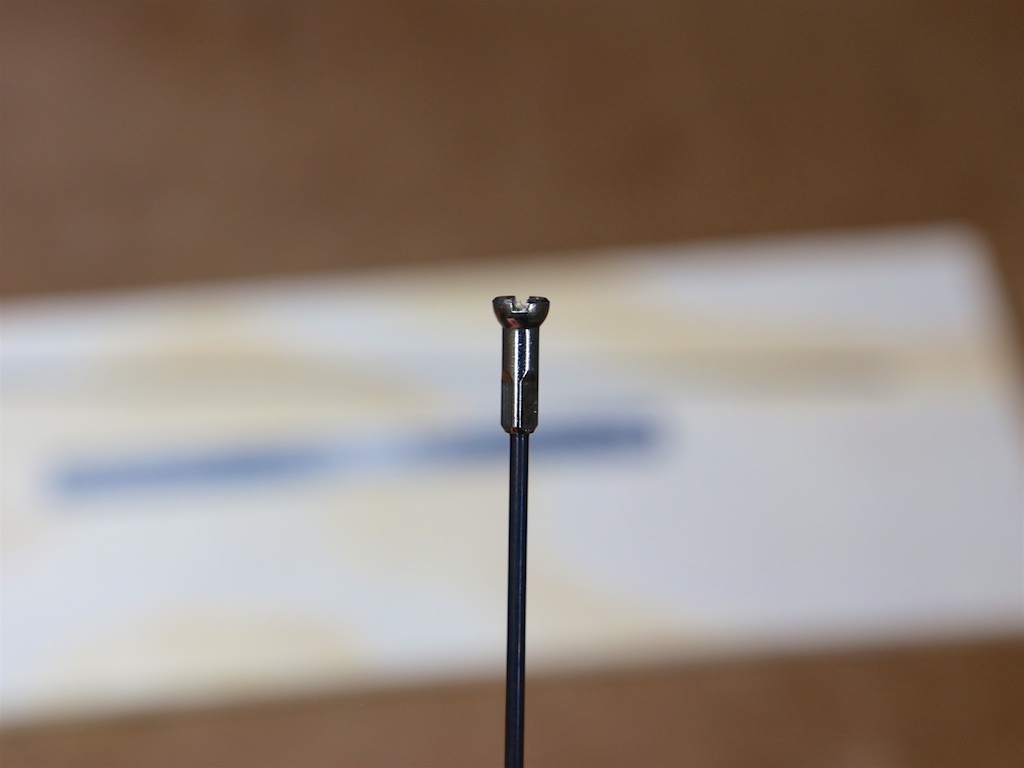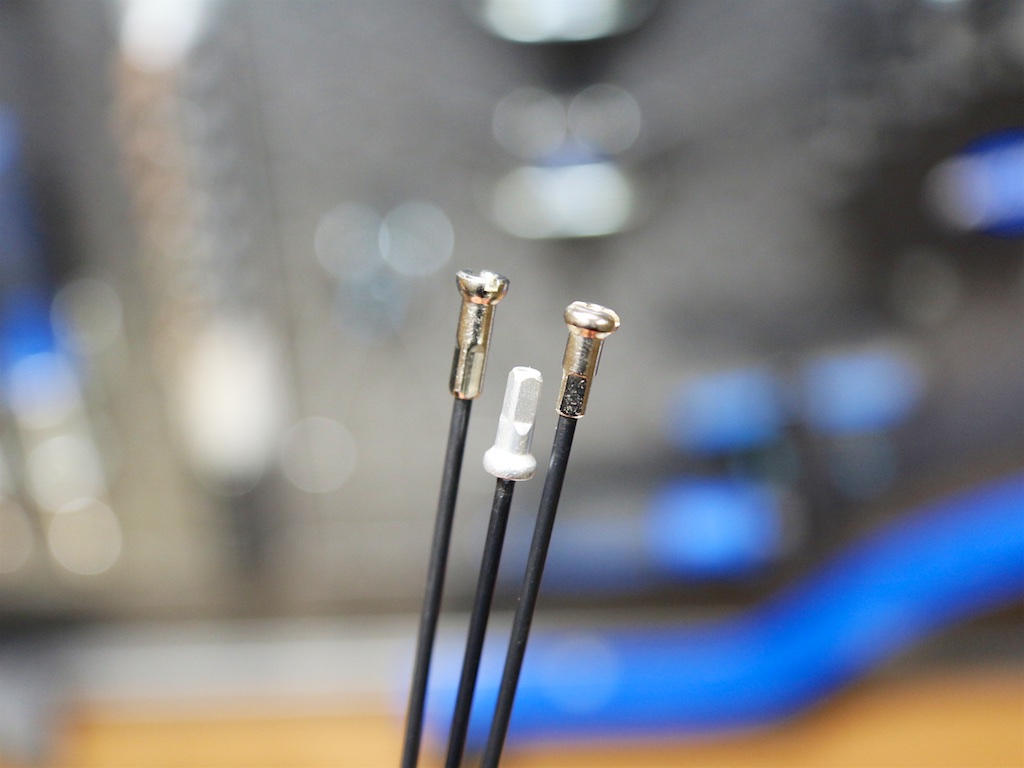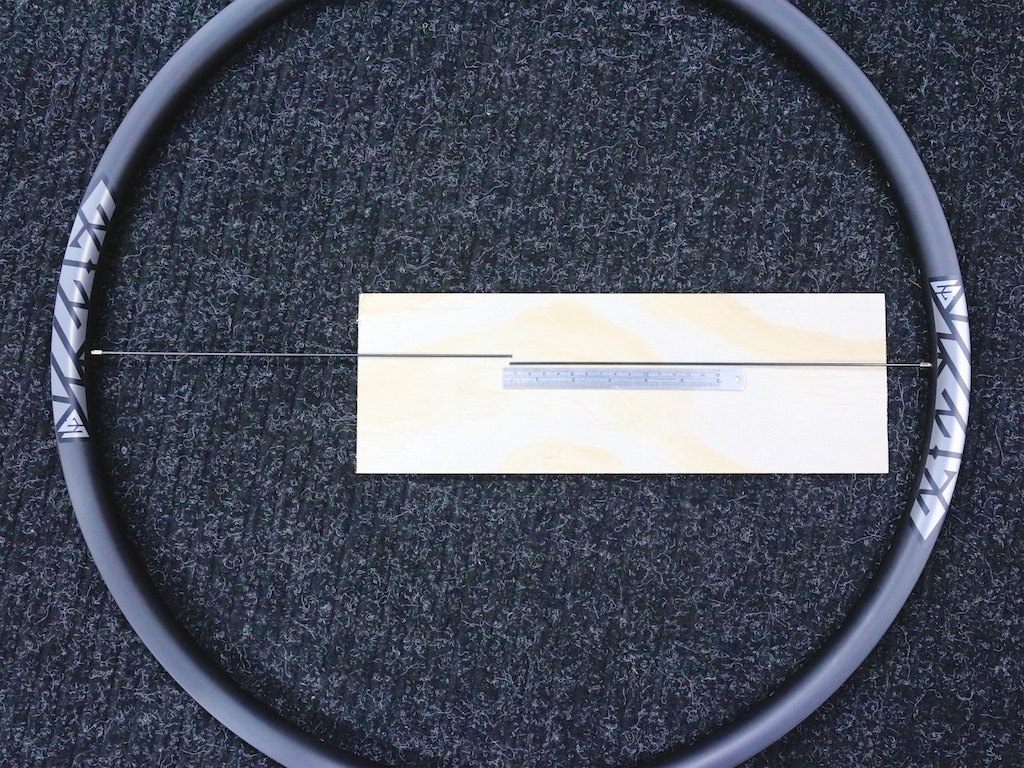Pros measure the effective rim diameter (ERD) of every rim.
My tools are DIY, which is inexpensive. Here’s how I make them: take two black 310mm Sapim Leader spokes and cut off the elbow leaving a 300mm rod. Use bolt cutters or a hacksaw to get close, then creep up on 300mm exactly using a file or a grinder. Screw a silver nipple to each rod using a bit of Loctite so they never move. For my process I make sure the spoke penetrates the nipple until it’s flush with the bottom of the screwdriver flats — spokes stretch a little under tension so they’ll end up in a good place. That’s it. If you’re precision-minded, you can ensure nipple geometry isn’t a factor by making a new set of measuring rods any time you build with a new variety of nipple.
Usage is straightforward. Insert your measuring spokes into opposing spoke holes, counting them to make sure you’re not off by one. Pull the spokes tightly across a ruler. To make the process easier and more accurate, try raising the ruler with a shim so the spokes leave the rim closer to 90°. Use a ruler with 0.5mm resolution (such as this one) or eyeball to the same. For most builds the spokes will overlap on the ruler, in which case you deduct the overlap length from 600mm. If the spokes don’t overlap, add the gap length to 600mm. Perform at least two measurements 90° apart and average the results to get ERD.
Note: you don’t need 300mm spokes to make a tool but it makes the addition/subtraction less error-prone. Use what you have but adjust the arithmetic factor to the sum of the length of your rods. If by some trick you end up with 300mm and 299mm rods, carry on using 599mm in your calculations instead of 600mm.




If you’re building with nipple washers, remember to increase spoke length to compensate. As an alternative, you can install nipple washers on your measuring spokes and build nipple washers right into your ERD. With asymmetric washers it’s helpful to give your measuring spokes a spin after pulling them taut just to make sure everything is seated properly. Overall this approach accounts for the end-to-end nipple/washer/rim fit and avoids errors from incorrect nominal measurements (a real thing).
Most spoke calculators will give you lengths to the tenth of a millimetre, which you’ll need to round to the nearest available length. Since measuring as above targets the bottom of the acceptable range, resist rounding down for low tension builds or on the low tension side of a wheel. In a future blog I’ll expand on the topic of rounding.
Published June 20, 2017